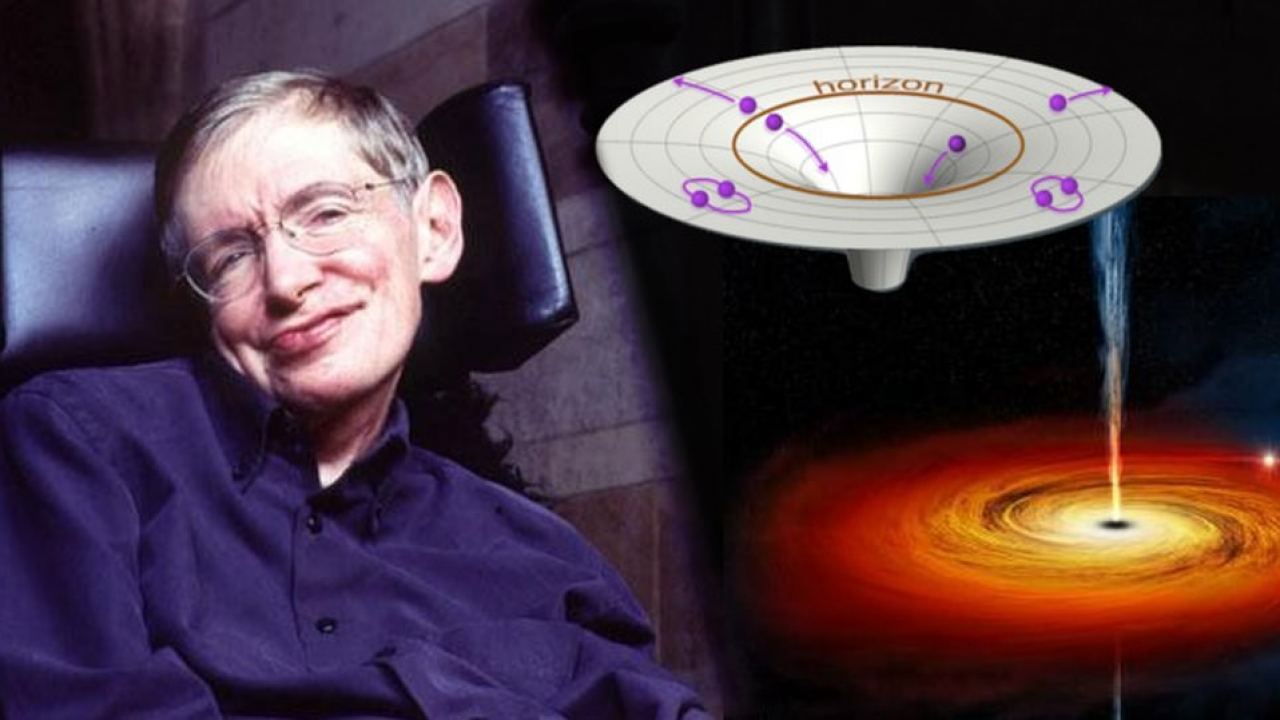Stephen Hawking was regarded as one of the most brilliant
theoretical physicists in history. His work on the universe's Origins and structure
from The Big Bang to Black Holes revolutionized the field.
History of Stephen Hawking
Theories of the Past Can Predict the Future
Stephen
Hawking explains that a theory is a model that accurately explains observations
within our environment. The most widely accepted theories are supported by
consistent findings across several experiments.
Newton's theory of gravity significantly evolved our
understanding. Newton's theory of gravity was revolutionary. During the 1600s,
people believed that objects were naturally at absolute rest. Hence, without
any action, the object would remain stationary. Newton flipped this idea on its
head by suggesting that all the universe's objects are in constant motion. This
theory was supported by Newton, observing the planets continually moving in
relation to each other
Newton's Three Laws
Based on Newton's findings, he developed three laws. All objects
will continue moving in a straight line, if not acted on by another force.
An object will speed up at a rate proportional to the force
acting on it. Additionally, the greater the mass of an object, the less a force
affects its motion. All bodies in the universe attract other bodies with force
proportional to the mass of each object.
The Speed of Light Challenges Newton's Theory
As we are in constant motion relative to other objects.
Newton described speed as relative to other objects. However, Hawking explains
that our understanding of the speed of light challenged this part of Newton's
Theory. The speed of light must always be a constant rather than relative. It is always 186,000 miles per second.
The solution to this hole in Newton's theory was solved in
the early 20th century by Albert Einstein. Specifically, Einstein's
theory of relativity time is not fixed. The theory of relativity built upon Newton's
theory of gravity by accounting for the speed of light being a constant.
Einstein suggested that the laws of science are the same for
all freely moving observers. Hence, this accounts for the constancy of the
speed of light. No matter the speed of a freely moving observer, the speed of
light will be the same. The reasoning behind this principle is that time is
relative rather than fixed. Hawking uses an analogy to explain this point. Imagine
a flash of light is emitted to two observers. One of these observers is
traveling toward the light while the other is traveling faster in the opposite direction.
The speed of the light remains the same for each observer, as it is constant.
However, time is determined by distance traveled divided by
speed. Hence, the two observers would perceive the emitted light at different
time points. Crucially, this means that neither observer would be incorrect in
their recording of the time when the light was first emitted. Instead, time
will be relative and unique to each of the observers.
Quantum Theory
Quantum State helps us measure particles. All matter
consists of particles, therefore to better understand the universe, we need to
understand particles. Including how they behave and their speed.
To overcome the limitations of measuring particles, scientists started to measure the Quantum State of the particles. Quantum State combines many likely possible positions and speeds of a particle. Hence, it is currently impossible for a scientists to observe the exact position and velocity of a particle. Instead, scientists have to track all the likely places it could be and determine which of these is most likely. This requires scientists to observe the particles as if they were waves. The variety of positions that a particle can appear and can be plotted as what looks like a continuous oscillating wave. The most likely positions of the particle arise where arcs and dips conform to one another.
Massive Objects Curving Space-time Causes Gravity
Hawking explains the gravity of massive objects causes
curving space-time. Additionally, huge masses like our Sun alter space-time. Imagine
the analogy of space-time as a blanket stretched out and held in the air, placing
an object in the middle of the blanket will cause the blanket to curve and the
object to sink. Once this curve is produced, other objects follow these curves
in space-time.
Hawking explains, this is because an object always traverses the shortest route between two points. With larger objects, this is a circular orbit. Space-time is the fourth dimension within our world. Physicists use space-time to describe events within the universe. To these scientists, an event occurs at a particular position in space and time. Scientists have to consider time because the theory of relativity states that time is relative. Subsequently, it is an essential factor in describing the nature of an event.
Black Holes
Crucially, our understanding of space-time allowed us to
evolve the theory of gravity. Stars rely on enormous amounts of energy to
produce heat and light. Plus as they often have a long lifespan, this amount
accumulates. Once this energy runs out, the star dies. The size of the star
will then determine the product of this star's death.
For example, massive stars produce black holes. Hawking outlines why the death of giant Stars can produce black holes. Black holes are created from these events. As the gravitational pull of massive stars is so strong. Stars use their energy to prevent themselves from collapsing due to the strong gravitational pull. However, once the star has run out of energy, it starts to collapse on itself. All surrounding matter is pulled inward towards an infinitely dense spherical point called a Singularity. This Singularity is what we call a black hole. A black hole's pull is so strong that light bends along it. Additionally, its strong gravitational pull prevents anything that crosses a particular boundary around it from escaping again.
Hawking notes this point of no return is called The Event
Horizon. Light is the fastest moving thing in the universe. However, even light
cannot escape black holes. As light cannot escape black holes, this highlights
a dilemma for observing them. However, scientists search for the gravitational
effects on the universe and the x-rays produced when the black hole sucks in
and tears of matter.
Time Can Only Move Forwards
Hawking explains in a brief history of time that the universe's expansion allows time to move forward. However, several scientists haven't given up on the possibility of the universe beginning to contract and time starting to run backward. Despite this, Hawking argues there are several strong indicators suggesting that time can only move forward.
The Arrows of Time
The second law of Thermodynamics is called entropy. Entropy suggests that disorder tends to increase with time. Disorder does not generally become spontaneously reordered, suggesting that time can only move forward. For example, a broken cup will not spontaneously become reordered. This is the thermodynamic Arrow of time. Similarly, you will develop a memory of this cup having broken. However, before this event you would not be able to recall its future position on the floor. This is the psychological error of time.
Finally, the cosmological error of time refers to the universe expanding. As the universe expands, entropy increases. Suppose the disorder in the universe were to reach its maximum point. In that case, the universe could start contracting: reversing the cosmological arrow of time. However, we wouldn't know about it because intelligent beings can only exist as disorder increases. This is because we rely on the process of entropy, to break down our food into energy. Subsequently, time might one day move backward. However, we will not be there to see it.
The Four Fundamental Forces
Gravity is one of the
fundamental forces of the universe. However, Hawking describes three other fundamental
forces of the universe.
Electromagnetic Force
Electromagnetic forces can be observed on all particles with
electric charges. This includes electrons and quarks. Also these forces create
events like a magnet sticking to a refrigerator. These forces can be attractive
or repulsive. Attraction occurs between positively and negatively charged
particles. Conversely repulsion occurs when two equally charged particles meet.
Hawking highlights that this force is far stronger than gravity and impacts
even the smallest atoms.
Weak Nuclear Force
Weak nuclear force acts on all particles that make up
matter. This force is considered weak as it can only exert force at short
distances. Nuclear forces produce radioactivity at higher energies. The
strength of weak nuclear force increases until it matches the electromagnetic
force.
Strong Nuclear Force
This nuclear force can bind protons and neutrons in the
nucleus of an atom. Similarly it can binds small quarks within protons and
neutrons. Strong nuclear force differs from weak as it gets weaker at higher energies
Grand Unification Energy
A state of high energy exists called Grand unification
energy. This state occurs when all three forces reach equal strength in doing
so they become different aspects of a single force. Hawking suggests this
unitary Force could have played a significant role in the creation of our
universe.
How Did the Big Bang Happen?
Scientists are almost entirely in agreement that the Big
Bang happened. However, where many scientists disagree is how the big bang
happened, there are two prominent theories of how the big bang could have
happened though.
The Hot Big Bang Model
The universe started with zero size and was infinitely hot and dense. The Big Bang produced expansion, which subsequently cooled the temperature of the universe. The reason for this cooling is the temperature is now being spread further. In the first few hours of this expansion, most of the universe's current elements were created. The larger bodies within the universe started to rotate due to gravity which created galaxies. Clouds of hydrogen and helium gases then started collapsing within these galaxies. This collapsing associated with a collision of atoms created nuclear fusion reactions. These reactions were the origin of stars. The death and collapse of these Stars created huge Stellar explosions that ejected more elements into the universe. These elements helped create more stars and planets.
The Inflationary Model
The energy of the early Universe was so high that the
strengths of the three forces spoken of above were equal. With Universe
expansion, these three forces develop different strengths. This occurred
rapidly. With the forces splitting in strength, an enormous amount of energy
was released. The release of energy created an anti-gravitational effect. The
anti-gravitational effect caused the universe to expand even more rapidly.
If there really is a complete unified theory that governs
everything it presumably also determines your actions. But it does so in a way
that is impossible to calculate for an organism that is as complicated as a
human being. The reason we say that humans have free will is because we can't
predict what they will do.

